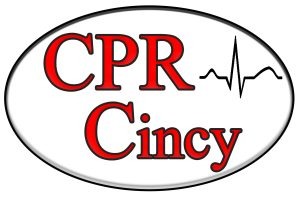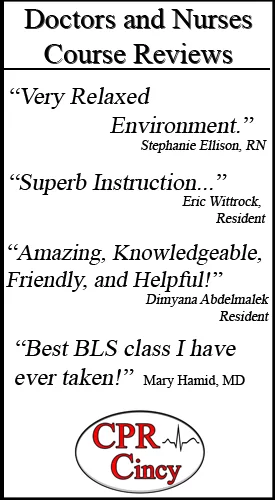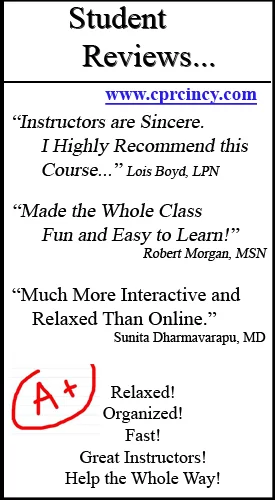Every year, sudden cardiac arrest claims more than 350,000 lives across the United States. This devastating medical emergency strikes without warning, leaving victims unconscious and without a pulse. Time becomes the most critical factor in survival. Each passing minute without intervention reduces survival chances by 7-10%. But there’s powerful hope in this race against time: automated external defibrillators, or AEDs.

Understanding the Role of AEDs in Sudden Cardiac Arrest
AEDs serve as portable lifesaving devices designed to restore normal heart rhythm during cardiac emergencies. When sudden cardiac arrest strikes, the heart’s electrical system malfunctions. This causes the heart to beat irregularly or stop pumping blood entirely. AEDs analyze the heart’s rhythm and deliver an electrical shock when needed. This shock can reset the heart’s electrical activity and restore normal function.
According to the American Heart Association, immediate CPR combined with AED use can double or triple a person’s survival chances. These devices have become essential tools in emergency response. They work by detecting abnormal heart rhythms and automatically determining when defibrillation is necessary.
What Are AEDs Used For in Cardiac Arrest Situations?
AEDs address the most critical need during sudden cardiac arrest: restoring the heart’s normal electrical rhythm. The device performs several vital functions. First, it analyzes the victim’s heart rhythm through electrode pads placed on the chest. Then, it determines whether a shock is needed. If required, the AED delivers a controlled electrical current through the chest to the heart.
The Cardiac Arrest Registry to Enhance Survival reports that approximately 264,000 EMS-treated cardiac arrests occurred in the United States in 2024. However, AEDs remain underutilized. Only 4% of out-of-hospital cardiac arrests receive AED intervention before emergency services arrive. This represents a significant missed opportunity to save lives.
AEDs are specifically designed to treat two dangerous heart rhythms: ventricular fibrillation and ventricular tachycardia. These conditions cause the heart to quiver ineffectively or beat too rapidly to pump blood. Without immediate treatment, brain death occurs within 4-6 minutes of collapse.
How AED Use Impacts Survival Chances in Cardiac Arrest
The statistics surrounding AED use paint a clear picture of their lifesaving potential. Research published in the American Heart Association’s journal Circulation demonstrates dramatic survival improvements. When bystanders use AEDs before emergency responders arrive, survival rates double compared to waiting for professional help.
A comprehensive study examining over 13,000 out-of-hospital cardiac arrests revealed striking results. Victims who received bystander CPR but no AED had a 9% survival rate. However, survival jumped to 24% when an AED was applied. When the AED delivered a shock, survival reached 38%.
A two-year study of young athletes showed even more impressive outcomes. When certified athletic trainers and on-site AEDs were available, survival rates reached 89%. This demonstrates the incredible impact of immediate access to defibrillation.
Recent data from the Sudden Cardiac Arrest Foundation confirms these trends. Patients whose cardiac arrests were witnessed by bystanders who intervened were over three times more likely to survive than those with unwitnessed arrests. Bystander intervention resulted in 16% survival compared to just 4.5% for unwitnessed cases.
The Role of Time in AED Effectiveness
Response time proves absolutely critical. If a cardiac arrest victim receives defibrillation within the first minute of collapse, survival chances approach 90%. However, every minute of delay without CPR and defibrillation reduces survival chances by 7-10%.
The average emergency medical services response time nationwide exceeds eight minutes. This creates a dangerous gap. Brain damage begins within 4-6 minutes without oxygen-rich blood flow. AEDs bridge this critical gap by enabling immediate intervention.
An Italian study demonstrated the power of faster response times. When lay volunteers equipped with AEDs arrived in 4.8 minutes compared to 6.2 minutes for emergency services, survival rates tripled. Early lay defibrillation achieved 10.5% survival compared to 3.3% with traditional response.
The Complete Role of AEDs in Cardiac Arrest Response
AEDs function as crucial links in the Chain of Survival concept developed by the American Heart Association. This chain outlines the critical steps needed to maximize survival chances. The steps include early recognition and activation of emergency services, immediate CPR, rapid defibrillation, and advanced medical care.
Modern AEDs are designed for simplicity. The devices provide voice instructions guiding users through each step. They cannot deliver a shock to someone who doesn’t need one. This built-in safety feature removes the risk of inappropriate shocks.
Public Access and Strategic Placement
Public access defibrillation programs have expanded AED availability across communities. These devices now appear in airports, shopping centers, sports facilities, schools, and workplaces. Approximately 10,000 cardiac arrests occur annually in American workplaces, yet only 50% of employees know where to locate an AED at work.
Strategic placement matters tremendously. AEDs should be positioned where cardiac arrests are most likely to occur or where large numbers of people gather. Access to AEDs in public locations significantly improves survival rates. Cardiac arrests occurring in public places show 21.1% survival rates compared to much lower rates for home incidents.
Training and Preparedness
While AEDs are designed for ease of use, training enhances effectiveness. Formal training typically takes 2-4 hours and includes CPR instruction. However, the devices are so intuitive that untrained bystanders have successfully used them in actual emergencies.
The American Heart Association emphasizes integrated training programs. More than 3.8 million people receive Red Cross First Aid, CPR, and AED training annually. Training participants report feeling 69% more prepared and 63% more confident to act during emergencies.
State and federal Good Samaritan laws protect individuals who use AEDs in good faith. No reported lawsuits involve proper AED use. Legal cases only arise from failure to have or use an AED when available.
Advancing AED Access and Eliminating Disparities
The American Heart Association’s 2030 goals focus on eliminating disparities in cardiac arrest survival. Current data shows significant inequities based on race, ethnicity, income, sex, and geographic location. The goal demands that bystander CPR and AED use rates in historically underrepresented communities equal those of the general population.
Georgia represents a model for legislative action. House Bill 874 requires all K-12 schools to have AEDs. Teachers, coaches, and school nurses must practice emergency responses, including CPR and AED use, twice yearly. Georgia also mandates that high school seniors learn hands-only CPR before graduation.
Improving survival rates requires multiple strategies. Communities need widespread CPR and AED training, strategic AED placement, continuous monitoring of outcomes, and targeted programs addressing identified barriers.
Take Action: Get Certified and Save Lives
Understanding AED use is not enough. Acquiring proper training transforms knowledge into lifesaving action. When seconds matter, your confidence and skills determine whether someone lives or dies.
CPR Cincinnati is an American Heart Association training site offering comprehensive, stress-free, hands-on instruction. Whether you need CPR certification in Cincinnati or BLS certification in Cincinnati, the programs cover initial certifications and renewals in BLS for Healthcare Providers, ACLS, PALS, and CPR and First Aid courses.
The courses prepare you to recognize cardiac emergencies, perform high-quality CPR, and use AEDs effectively. Training extends beyond technical skills. It builds the confidence to act decisively when someone’s life hangs in the balance.
Don’t wait for an emergency to wish you had prepared. With over 1,000 cardiac arrests occurring daily in the United States and survival rates remaining below 10% nationally, your training could make the difference. Contact CPR Cincinnati today and become someone’s lifesaving hero tomorrow.
Frequently Asked Questions
How quickly must an AED be used to be effective during sudden cardiac arrest?
AED effectiveness decreases rapidly with time. If applied within the first minute after cardiac arrest, survival chances reach nearly 90%. However, for every minute that passes without defibrillation and CPR, survival chances drop by 7-10%. The average EMS response time exceeds eight minutes, making immediate bystander intervention with an AED critical. Brain death begins within 4-6 minutes without oxygen, emphasizing the narrow window for effective intervention.
Can someone without medical training safely use an AED?
Yes. AEDs are specifically designed for use by non-medical personnel. The devices provide clear voice instructions guiding users through each step of the process. They automatically analyze the heart rhythm and only deliver shocks when medically necessary. It’s impossible to shock someone who doesn’t need it. Good Samaritan laws protect individuals who use AEDs in good faith, and no lawsuits have been filed against proper AED use. While formal training enhances confidence, many untrained individuals have successfully used AEDs in emergencies.
Where should AEDs be placed for maximum community benefit?
AEDs should be strategically positioned in locations where cardiac arrests are most likely to occur or where large numbers of people gather. Priority locations include workplaces (which see 10,000 cardiac arrests annually), schools, sports facilities, airports, shopping centers, public buildings, and community centers. The devices should be easily accessible within a 3-5 minute response time from any location in the facility. Cardiac arrests in public places with readily available AEDs show survival rates of 21.1% compared to significantly lower rates in homes without immediate access to defibrillation.





